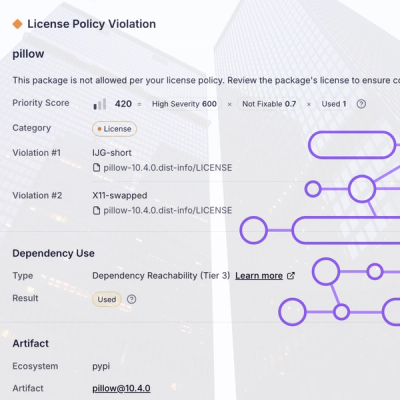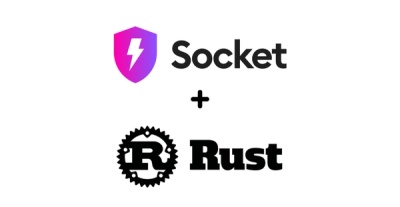
Research
/Security News
Critical Vulnerability in NestJS Devtools: Localhost RCE via Sandbox Escape
A flawed sandbox in @nestjs/devtools-integration lets attackers run code on your machine via CSRF, leading to full Remote Code Execution (RCE).
QCFx is a Python library designed to add dynamic, real-time background blurring effects to PyQt5 applications. It provides various modes of operation, allowing for different levels of quality and performance to suit the needs of your application.
QCFx is a Python library designed to add dynamic, real-time background blurring effects to PyQt5 applications. It provides various modes of operation, allowing for different levels of quality and performance to suit the needs of your application. The project leverages multi-threading to maintain smooth user experience even while performing complex image processing tasks.
To use QCFx in your project, ensure you have the following dependencies installed:
pip install QCFxPython
Below is a basic example of how to integrate QCFx into your PyQt5 application.
from PySide2.QtCore import *
from PySide2.QtGui import *
from PySide2.QtWidgets import *
import sys
from qcfx import QCFx_Blur, QCFx
from ui_testWindow import Ui_MainWindow
class MainWindow(QMainWindow):
def __init__(self):
super().__init__()
self.ui = Ui_MainWindow()
self.ui.setupUi(self)
self.qcfx = QCFx()
self.blur = QCFx_Blur(self, mode=self.qcfx.MODE_WINDOW_S)
self.ui.body.setStyleSheet('background-color:rgba(0,0,0,0);')
self.ui.overlay.setStyleSheet('background-color:rgba(0,0,0,0);')
if __name__ == "__main__":
app = QApplication(sys.argv)
window = MainWindow()
window.show()
sys.exit(app.exec_())
QCFx provides several predefined modes for blurring:
MODE_DESKTOPONLY_U: Ultra-quality blurring of the desktop background only.MODE_DESKTOPONLY_S: Medium-quality blurring of the desktop background only.MODE_DESKTOPONLY_L: Low-quality blurring of the desktop background only.MODE_WINDOW_U: Ultra-quality blurring that includes window monitoring.MODE_WINDOW_S: Medium-quality blurring that includes window monitoring.MODE_WINDOW_L: Low-quality blurring that includes window monitoring.QCFx allows you to configure various settings via a JSON file stored in the AppData directory. The default settings include:
{
"blurScalingFactor": 2,
"recursiveFixedUpdate": false,
"updateInterval": 500,
"windowStateMonitoring": true,
"windowMoveMonitoring": true,
"otherWindowsStateMonitoring": true,
"desktopMonitoring": true,
"blurringFunction": 2,
"blurRadius": 40,
"blurLayerStylesheet": "background-color:none; border-radius:8px; padding:2px;",
"showWindowTitlebar": true,
"showWindowBorders": true
}
applySettings_fromMode(mode)Apply settings based on the selected mode (e.g., MODE_WINDOW_S).
applySetting(key, value)Apply a specific setting dynamically during runtime.
reloadSettings()Reload settings from the JSON file.
QCFx provides several points of customization, including:
blurLayerStylesheet setting.blurringFunction setting.Contributions are welcome! Please feel free to submit a pull request or open an issue if you encounter any bugs or have suggestions for new features.
This project is licensed under the MIT License. See the LICENSE file for more details.
Feel free to adjust the text as needed, depending on your specific use case or additional features.
FAQs
QCFx is a Python library designed to add dynamic, real-time background blurring effects to PyQt5 applications. It provides various modes of operation, allowing for different levels of quality and performance to suit the needs of your application.
We found that QCFxPython demonstrated a healthy version release cadence and project activity because the last version was released less than a year ago. It has 1 open source maintainer collaborating on the project.
Did you know?

Socket for GitHub automatically highlights issues in each pull request and monitors the health of all your open source dependencies. Discover the contents of your packages and block harmful activity before you install or update your dependencies.

Research
/Security News
A flawed sandbox in @nestjs/devtools-integration lets attackers run code on your machine via CSRF, leading to full Remote Code Execution (RCE).

Product
Customize license detection with Socket’s new license overlays: gain control, reduce noise, and handle edge cases with precision.

Product
Socket now supports Rust and Cargo, offering package search for all users and experimental SBOM generation for enterprise projects.